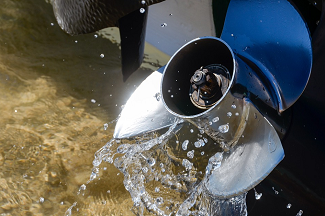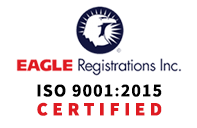Propeller Ventilation
What is propeller ventilation?
Propeller ventilation occurs when air or exhaust gases are drawn into the propeller's path, resulting in performance issues. Ventilation can affect boat handling, speed, and overall efficiency. If you notice air bubbles or froth near the surface of the water around the propeller, you may be seeing propeller ventilation.
Effects of propeller ventilation:
- Loss of Power: Ventilation can cause a sudden loss of engine power, reducing your boat's acceleration and top speed.
- Increased RPM: When the propeller ventilates, your engine may rev up to higher RPMs without a proportional increase in boat speed.
- Reduced Thrust: Your boat may present with decreased thrust, leading to poor acceleration and slower planing.
- Cavitation: Propeller ventilation can lead to cavitation, resulting in increased noise, vibration, and reduced propeller efficiency.
- Poor Boat Handling: Your boat may become more difficult to steer due to the loss of propeller grip in the water.
- Overheating: Ventilation can disrupt the flow of cooling water to your engine, leading to overheating issues.
- Increased Fuel Consumption: Reduced efficiency caused by ventilation may result in higher fuel consumption.
- Propeller RPM Fluctuations: When the propeller ventilates, you may notice fluctuations in your propeller RPM, even at constant throttle settings.
Propeller Ventilation Repair
It's important to address propeller ventilation issues promptly to avoid potential damage to the propeller and engine and to improve overall boat performance.
To minimize the risk of ventilation, ensure your boat is properly loaded, adjust the engine trim appropriately and avoid sharp turns or abrupt changes in speed when operating your boat. If ventilation is a persistent problem, consult with a marine expert or propeller specialist to explore potential propeller adjustments or replacements.
Propeller ventilation repair involves addressing the underlying issues causing the ventilation and restoring the propeller's performance:
- Identification of Ventilation Causes: Common causes of propeller ventilation include improper trim, uneven weight distribution, flawed propeller design or undesirable operating conditions.
- Propeller Balancing: If propeller ventilation is being caused by cavitation, balance the propeller after repairing cavitation damage to ensure smooth operation and reduce vibrations.
- Sea Trials and Testing: Once the repair is complete, conduct sea trials or testing in controlled conditions to ensure your propeller operates smoothly and efficiently.
In some cases, propeller modification or replacement may be necessary to improve your propeller's performance and reduce the risk of ventilation.
9 Tips for Reducing Propeller Ventilation:
- Make sure your boat is loaded properly with weight distributed evenly. Avoid placing excessive weight at the stern or near the transom, as this can increase the likelihood of ventilation
- Properly adjust your engine trim to achieve the correct trim angle for your boat's speed and load. Adjusting the trim can help optimize your propeller's performance and reduce the risk of ventilation
- If your boat is equipped with trim tabs, use them to adjust the boat's trim and counteract any listing or bow rise which could lead to ventilation
- When operating your boat, avoid making sharp turns at high speeds, as this can cause the propeller to come out of the water and ventilate
- Gradually accelerate rather than applying full throttle abruptly, as sudden increases in speed can lead to ventilation
- If your boat has an adjustable outboard or stern drive, raising the engine slightly may help keep your propeller deeper in the water and reduce the risk of ventilation
- If ventilation is a persistent problem, consider replacing your propeller with a different type or size to better suit your boat's specific needs and operating conditions
- Lowering your engine trim angle to keep your propeller deeper in the water and reduce the chances of ventilation
- Avoid running your boat in shallow waters where your propeller is more likely to ventilate
Prevent Propeller Ventilation with Our High-Quality Custom Cast Propellers
Not to be confused with cavitation, propeller ventilation is when a boat propeller’s blades starts sucking in air, causing the boat to slow down and the engine to speed up. Boat propellers need to be submerged in water in order to work properly, and when they run in the air, ventilation can occur. Examining your propeller consistently for dented blades, nicks and rolled tips is essential to preventing ventilation.
If your propeller blades are affected by ventilation, call the experts at R2 Quality Castings to create brand new boat propellers for your unique application. We design and manufacture close tolerance near net-shaped precision cast propellers to suit all your marine applications. Give us a call today to learn more or to request a quote.
Custom Propeller Design with Additional Options
In addition to our propeller casting and product finishing and polishing services, R2 Quality Castings has a wide selection of propeller molds and patterns perfect for a range of applications. Our master precision investment casters can make any mold or design you're looking for to create your ideal propeller. We offer customization options including:
- Static Balancing
- Clipped Propellers for Draft Tube Applications
- Standard Setscrew(s)
- Straight, Tapered, Threaded, and Broached Bores
- And more
For the finest cast propellers, call the experts at R2 Quality Castings!


